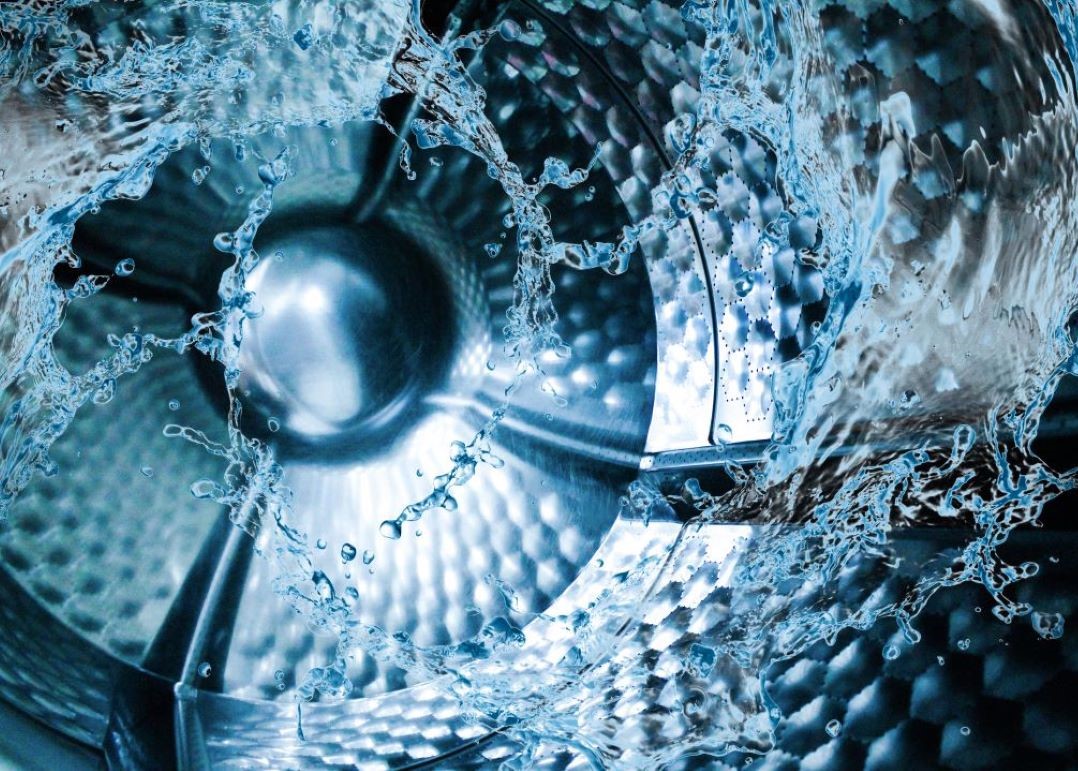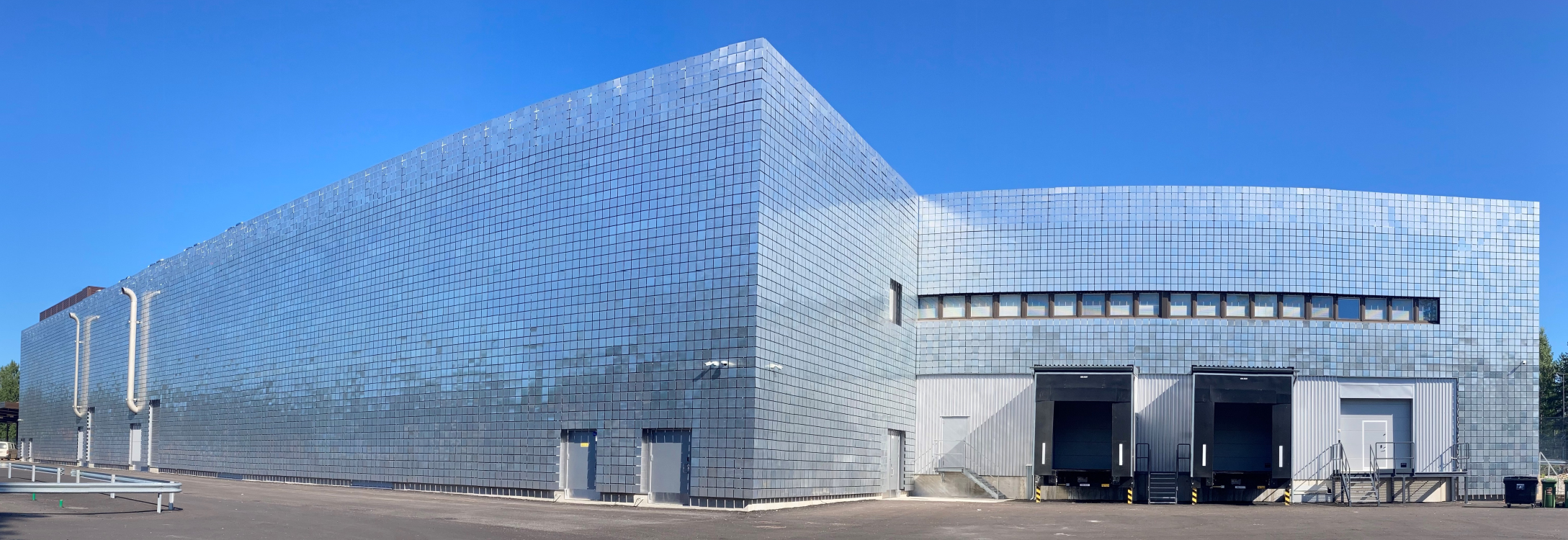Liquid Cooling Technologies Driving Data Centre Efficiency
Cooling
Data Centres
Liquid Cooling Technologies Driving Data Centre Efficiency
Modular Data Centres in the UK: Scalable, Smart Infrastructure
News
Sonic Edge partners with Iceotope to launch dedicated AI Pods
Sonic Edge, a provider of modular data centres (MDCs), is partnering with Iceotope, a global precision liquid cooling expert, to launch new Iceotope AI Pods.
Sonic Edge provides a range of Edge and HPC (High-Performance Computing)-ready MDCs that enable organisations to run their operations anywhere in the world. With the significant increase in the compute densities required for AI applications, Sonic Edge recognised the opportunity to design and build containerised MDCs, or Pods, that are AI application-ready, incorporating advanced precision liquid cooling technology from Iceotope.
The resulting Iceotope AI Pods are multi-tenant MDCs with a capacity of up to 450kW, a 12x4m footprint, and can be deployed either on-premise, or in remote locations. They are designed to include everything you would find in a standard data centre facility, such as UPS backup, fire suppression, and monitoring and evaluation.
Stuart Priest, Founder and CEO, Sonic Edge, explains, “There are many organisations, particularly start-ups, that can’t afford to wait for colocation space to become available for their operations. They are looking to get their own high-performance, AI-ready MDCs up and running fast. We’re excited about our collaboration with Iceotope because we can now provide cloud or edge providers with multi-tenant Pods that have Iceotope’s advanced precision liquid cooling built in.”
David Craig, CEO, Iceotope, adds, “We’re seeing an unprecedented surge in data generation and the evolving role of data centres as interactive AI powerhouses. To meet this demand – and with scalability, serviceability, and sustainability at the forefront of industry demands – our precision liquid cooling is pivotal to providers such as Sonic Edge. We are delighted to be partnering with them to have our technology incorporated into fast and easy-to-deploy Pods to facilitate high-performance AI.”
Rapid implementation and cost-effectiveness are major benefits of the AI Pods, according to Stuart Priest. He notes, “To build and get a data centre up and running can take five or six years, whereas with an AI Pod it takes just 16 weeks from order to delivery. Everything needed to make it operational is there from day one, and we offer ‘tier three ready’ as standard. We also ensure that the Iceotope AI Pods adhere to all relevant industry compliance standards. The highest levels of security can also be incorporated, ranging from SR1 to SR8.”
Flexibility is at the heart of the Iceotope AI Pods. Stuart continues, “Our Pods are meticulously designed to adapt seamlessly to customers’ growing requirements. We believe in building a solution to fit the project, rather than trying to fit the project into the solution. With Iceotope AI Pods, you can literally ‘pay as you grow’.”
For more from Iceotope, click here.
Simon Rowley - 21 May 2024
Cooling
Data Centres
Liquid Cooling Technologies Driving Data Centre Efficiency
News
LiquidStack opens new facility to scale liquid cooling production
LiquidStack, provider of liquid cooling solutions for data centres, has announced its new US manufacturing site and headquarters located in Carrollton, Texas. The new facility is a major milestone in its mission to deliver high performance, cost-effective and reliable liquid cooling solutions for high performance data centre and edge computing applications. With a significant uptick in liquid cooling demand associated with scaling generative AI, the new facility enables it to respond to customers' needs in an agile fashion, while maintaining the standards and services the company is known for.
LiquidStack’s full range of liquid cooling solutions are being manufactured on site, including direct-to-chip Coolant Distribution Units (CDUs), single phase and two phase immersion cooling solutions and the company’s MacroModular and MicroModular prefabricated data centres. The site will also host a service training and demonstration centre for customers and its global network of service engineers and partners.
“We are seeing incredibly high demand for liquid cooling globally as a result of the introduction of ultra-high TDP chips that are driving the scale and buildout of generative AI. Our investment in this new facility allows us to serve the rapidly growing market while creating new, high-skilled jobs right here in Carrollton,” says Joe Capes, CEO, LiquidStack.
The new manufacturing facility and headquarters occupies over 20,000sqft. It has also been in operation since December 2023, and a formal ribbon cutting ceremony will be held on March 22, 2024. Expected attendees include members of the city council and the Metrocrest chamber of commerce, as well as LiquidStack customers and partners.
Isha Jain - 5 March 2024
Data Centres
Liquid Cooling Technologies Driving Data Centre Efficiency
Modular Data Centres in the UK: Scalable, Smart Infrastructure
News
STULZ Modular and Asperitas join forces to redefine liquid cooling
STULZ Modular, provider of modular data centre solutions and a wholly owned subsidiary of STULZ GmbH, has collaborated with Asperitas in the domain of liquid cooling. The purpose of this collaboration is to realise the benefits of immersion cooling for high-density data centre environments and the implementation of a concept for a modular data centre solution with integrated immersion cooling for indoor and outdoor installation.
The project was implemented jointly by STULZ Modular and Asperitas. As an independent technology partner, Asperitas primarily contributed immersion cooling expertise and products. STULZ Modular developed the concept for the data centre infrastructure components, in addition to the recirculating air conditioning and mechanical refrigeration with a view to efficiency and effectiveness. STULZ Modular's concept also includes the secure supply of the power train (switch-gear, UPSs and PDUs), the complete cooling circuit, remote monitoring and infrastructure management (DCIM), as well as early fire detection and extinguishing.
The result of the collaboration is a compact, modular end-to-end data centre for an IT load of up to 200kW, in combination with immersion cooling technology from Asperitas. The IT capacity can be scaled up as per larger load requirements. It is specifically designed for highly efficient cooling of particularly power-hungry IT applications, such as the local processing of large amounts of data, data science, generative AI or industrial edge.
In addition to the extremely efficient immersion cooling technology, the outstanding features of the modular data centre solution also include the consistent, fully integrated data centre infrastructure from STULZ Modular. The configuration offers high reliability and additional redundancy as well as rapid scalability and efficiency. The use of systems and components from leading manufacturers guarantees maximum reliability. The modular concept also enables customer-specific adaptations and being fully factory tested, and therefore, arrives at the final site ready for immediate use. It offers its customers a global presence plus premium services.
Isha Jain - 27 February 2024
Cooling
Data Centres
Liquid Cooling Technologies Driving Data Centre Efficiency
Iceotope achieves chip cooling industry milestone at 1000W
Iceotope has achieved chip-level cooling up to 1000W and beyond. The published results in, 'Achieving chip cooling at 1000W and beyond with single phase precision liquid cooling', validate how single-phase liquid cooling can achieve 1000W cooling and the thermal performance of precision liquid cooling.
The data centre industry is looking to liquid cooling as the solution for solving challenges such as the compute densities required for AI, the overall rising thermal design power of IT equipment, and the need for sustainable cooling solutions. Data centre operators must know they are future-proofing their infrastructure investment for 1000W to 1500W to 2000W CPUs and GPUs in the coming years. The testing conducted by Iceotope Labs has demonstrated how precision liquid cooling technology is expected to meet these challenges.
Key findings from the testing include:
At a flow rate of 7l/min, Iceotope's copper-pinned KUL SINK achieved a thermal resistance of 0.039K/W when a 1000W heat load was applied to Intel’s Airport Cove thermal test vehicle (TTV), a thermal emulator for the 4th Gen Intel Xeon Scalable processors. This translates to an 11.4% improvement in thermal resistance, compared to a like-for-like test of a tank immersion product containing a forced-flow heatsink.
Thermal resistance remains almost constant at a given flow rate as the power was increased from 250W to 1000W.
The results demonstrate high confidence that testing at 1500W will yield the same consistency based on the testing of the thermal resistance from 250W to 1000W.
“Iceotope precision liquid cooling technology has achieved an important industry milestone by demonstrating enhanced thermal performance capability compared to other competing liquid cooling technologies,” says Neil Edmunds, Vice President of Product Management at Iceotope.
“We are confident that future testing of our standard solution at elevated power levels will demonstrate further inherent cooling capability. Iceotope is also continuing to develop new solutions which enable even higher roadmap power levels to be attained in a safe, sustainable and scalable way.”
“The ability to cool 1000W silicon is a key milestone in building the runway for silicon with higher thermal design power and enabling efficient data centre and Edge cluster solutions of the future,” says Mohan J Kumar, Intel Fellow.
Read more latest news from Iceotope here.
Isha Jain - 8 February 2024
Cooling
Data Centres
Liquid Cooling Technologies Driving Data Centre Efficiency
Concentric AB wins business nomination in liquid cooling market
Concentric AB has announced that it has received its first new multi-year business nomination from a leading global OEM customer in the data centre liquid cooling market. The value of this new business is 63MSEK per year, and the start of production is planned in the first quarter of 2025. This strategic customer selected Concentric’s seal-less e-pump based on its innovative design, proven endurance and dependability for its new data centre liquid cooling application.
The global data centre market is expected to grow at a CAGR of 10-13% over the next six years. There is a clear trend towards liquid cooling in these applications, and it is anticipated that liquid cooling in data centres will grow at a faster rate of 24.4% during the same period, according to a report by MarketsAndMarkets Research.
AI has redefined the way chips are designed and utilised in the semiconductor industry, leading to optimised energy efficiency and performance for larger datasets. As performance requirements increase, so does the need for cooling. Liquid cooling is more effective than air cooling in handling a data centre's growing densities, as these systems directly dissipate heat from the battery cells through the coolant, allowing customers to achieve precise temperature control, unaffected by external conditions.
“This first business nomination from a global market leading OEM for data centre cooling systems is another testimonial of the successful execution of our growth plans into new markets. As with our previous wins in energy storage applications, data centres are another new market where our existing products, which are already proven to manage similar liquid cooling challenges, can fulfil the customer’s needs. This new business serves as a significant gateway for Concentric into this highly attractive and fast-growing market and I am extremely proud of our global sales and engineering team, who has developed this new solution with the customer, based on an existing Concentric product,” says Martin Kunz, President and CEO Concentric AB.
Isha Jain - 29 January 2024
Cooling
Data
Data Centres
Liquid Cooling Technologies Driving Data Centre Efficiency
Building the telco edge
By Nathan Blom, Chief Commercial Officer, Iceotope
With the growing migration of data to the edge, telco providers are facing new challenges in the race to net zero. Applications like IoT and 5G require ultra-low latency and high scalability to process large volumes of data close to where the data is generated, often in remote locations. Mitigating power constraints, simplifying serviceability and significantly driving down maintenance costs are rapidly becoming top priorities. Operators are tasked with navigating these changes in a sustainable and cost-effective manner, while working towards their net zero objectives. Liquid cooling is one solution able to help them do just that.
Challenges facing telco operators
The major challenges confronting telco operators can be distilled into three fundamental aspects: power constraints, increased density, and rising costs.
The limitations of available power in the grid pose a significant challenge. Both urban areas and the extreme edge have concerns about diverting power from other essential activities. As telcos demand more data processing, increased computational power, and GPUs, power consumption becomes a critical bottleneck. This constraint pushes operators to find innovative solutions to reduce power consumption.
Telco operators also face the dual challenge of increasing the number of towers while also enhancing the capacity of each tower. This requirement to boost compute power at each node and increase the number of nodes strains both power budgets and computational capabilities. The pursuit of maximising the value of each location becomes critical.
Finally, the combination of increased density, heightened service costs per site, and a surge in operational expenses (OPEX) due to the need for service and maintenance leads to rising costs, particularly at the extreme edge. The logistics and expenses of servicing remote sites drive up OPEX, making it a pressing concern for telco operators.
Liquid cooling as a solution
One promising avenue to address these challenges is liquid cooling. Cooling is a vital aspect of data centre operations, consuming approximately 40% of the total electricity used. Liquid cooling is rapidly becoming the solution of choice to efficiently and cost-effectively accommodate today’s compute requirements. However, not all liquid cooling solutions are the same.
Direct-to-chip appears to offer the highest cooling performance at chip levels, but because it still requires air cooling, it adds inefficiencies at the system level. It is a nice interim solution to cool the hottest chips, but it does not address the longer-term goals of sustainability, serviceability, and scalability. Meanwhile, tank immersion offers a more sustainable option at the system level, but requires a complete rethink of data centre design. This works counter to the goals of density, scalability, and most importantly, serviceability. Facility and structural requirements mean brownfield data centre space is essentially eliminated as an option for both of those solutions, not to mention special training is required to service the equipment.
Precision liquid cooling combines the best of both technologies, by removing nearly 100% of the heat generated by the electronic components of a server and reducing energy use by up to 40% and water consumption by up to 100%. It does this by using a small amount of dielectric coolant to precisely target and remove heat from the hottest components of the server, ensuring maximum efficiency and reliability. This eliminates the need for traditional air-cooling systems and allows for greater flexibility in designing IT solutions. There are no hotspots to slow down performance, no wasted physical space on unnecessary cooling infrastructure, and minimal need for water consumption.
Precision liquid cooling also reduces stress on chassis components, reducing component failures by 30% and extending server lifecycles. Servers can be hot swapped at both the data centre and at remote locations. Service calls are simplified and eliminate exposure to environmental elements on-site, de-risking service operations.
Operating within standard rack-based chassis, Precision liquid cooling is also highly scalable. Telco operators can effortlessly expand their compute capacity from a single node to a full rack, adapting to evolving needs.
The telco industry is on the cusp of a transformative era. Telco operators are grappling with the challenges of power constraints, increased density, and rising costs, particularly at the extreme edge. Precision liquid cooling offers a sustainable solution to these challenges. As the telecommunications landscape continues to evolve, embracing innovative cooling solutions becomes a strategic imperative for slashing energy and maintenance costs while driving toward sustainability goals. It's going to be an exciting time for the future of compute.
Isha Jain - 7 December 2023
Cooling
Liquid Cooling Technologies Driving Data Centre Efficiency
News
Vertiv's acquisition of CoolTera boosts liquid cooling portfolio
Vertiv has announced that subsidiaries of the company have entered into a definitive agreement to acquire all of the shares of CoolTera, a provider of coolant distribution infrastructure for data centre liquid cooling technology and certain assets, including certain contracts, patents, trademarks, and intellectual property from an affiliate of CoolTera.
Founded in 2016 and based in the UK, CoolTera provides liquid cooling infrastructure solutions, and designs and manufactures coolant distribution units (CDU), secondary fluid networks (SFN), and manifolds for data centre liquid cooling solutions. CoolTera and Vertiv have been technology partners for three years with multiple global deployments to data centres and super compute systems. The acquisition of CoolTera brings advanced cooling technology, deep domain expertise, controls and systems, and manufacturing and testing for high density compute cooling requirements to Vertiv’s already robust thermal management portfolio, as well as key industry partnerships already in place across the ecosystem for such applications. CoolTera has a proven track record of engineering excellence and strong customer service supported by a team of highly qualified, proven liquid cooling engineers.
“This bolt-on technology acquisition is consistent with our long-term strategic vision for value creation, and further strengthens our expertise in high-density cooling solutions,” says Giordano Albertazzi, Chief Executive Officer, Vertiv. “And while the purchase price is not material to Vertiv, the acquisition is essential to further reinforce our liquid cooling portfolio, enhancing our ability to serve the needs of our global data centre customers and strengthening our position and capabilities to support the needs of AI at scale.”
“It was a logical decision to join the Vertiv family,” says Mark Luxford, CoolTera’s Managing Director. “We are excited to join the leader in data centre thermal management. Vertiv has demonstrated the ability to scale technologies at a pace that is needed for AI deployment. We look forward to working as a team to deliver next generation liquid cooling technologies at the scale the industry requires. Vertiv is well-positioned to support the industry growth.”
The acquisition is expected to close in the fourth quarter of 2023, subject to customary closing conditions.
Isha Jain - 5 December 2023
Artificial Intelligence in Data Centre Operations
Data Centre Operations: Optimising Infrastructure for Performance and Reliability
Liquid Cooling Technologies Driving Data Centre Efficiency
News
Sustainable Infrastructure: Building Resilient, Low-Carbon Projects
Vertiv and Intel join forces to accelerate AI adoption
Vertiv has announced that it is collaborating with Intel to provide a liquid cooling solution that will support the revolutionary new Intel Gaudi3 AI accelerator, scheduled to launch in 2024. AI applications and high-performance computing emit higher amounts of heat, and organisations are increasingly turning to liquid cooling solutions for more efficient and eco-friendly cooling options.
The Intel Gaudi3 AI accelerator will enable both liquid-cooled and air-cooled servers, supported by Vertiv pumped two-phase (P2P) cooling infrastructure. The liquid-cooled solution has been tested up to 160kW accelerator power using facility water from 17°C up to 45°C (62.6°F to 113°F). The air-cooled solution has been tested up to 40kW of heat load that can be deployed in warm ambient air data centres up to 35°C (95°F). This medium pressure direct P2P refrigerant-based cooling solution will help customers implement heat reuse, warm water cooling, free air cooling and reductions in power usage effectiveness (PUE), water usage effectiveness (WUE) and total cost of ownership (TCO).
“The Intel Gaudi3 AI accelerator provides the perfect solution for a Vertiv and Intel collaboration,” says John Niemann, SVP Global Thermal Line, Vertiv. “Vertiv continues to expand our broad liquid cooling portfolio, resulting in our ability to support leaders of next generation AI technologies, like Intel. Vertiv helps customers accelerate the adoption of AI quickly and reliably, while also helping them to achieve sustainability goals.”
“The compute required for AI workloads has put a spotlight on performance, cost and energy efficiency as top concerns for enterprises today,” says Dr Devdatta Kulkarni, Principal Engineer and Lead Thermal Engineer on this project at Intel. “To support increasing thermal design power and heat flux for next-generation accelerators, Intel has worked with Vertiv and other ecosystem partners to enable an innovative cooling solution that will be critical in helping customers meet critical sustainability goals.”
Isha Jain - 4 December 2023
Data Centres
Liquid Cooling Technologies Driving Data Centre Efficiency
News
Verne Global unveils liquid cooling at its data centre campus in Finland
Verne Global has announced the integration of liquid cooling technology with its data centre campus in Pori, Finland, known as The Rock.
The surge in AI, machine learning and high-performance computing is amplifying the need for robust data centre cooling solutions. At a time when increasing energy efficiency is paramount for most data centre operators, the average data centre commits 40% of its energy consumption to cooling its infrastructure. The network demands of the AI models also require a significantly higher level of computational density, putting further strains on conventional air-cooling technologies. As a result, liquid cooling is quickly gaining traction in the market.
Recognising this pressing need for cooling innovation, Verne has collaborated closely with Dell Technologies and Intel to introduce direct liquid cooling (DLC) to The Rock campus in Finland. The deployment features DLC on Dell DLC3000 rack solutions with up to 80kW+ cooling capacity and 4th Gen Intel Xeon Scalable processors to maximise performance and cooling efficiency. Working with Dell and Intel enables reliable and efficient performance for the fastest growing AI workloads that businesses depend on today.
Isha Jain - 4 December 2023
Cooling
Liquid Cooling Technologies Driving Data Centre Efficiency
News
LiquidStack unveils single-phase immersion cooling offering
LiquidStack has announced its new single-phase liquid cooling solution. The announcement marks the first step in the company’s planned expansion of its DataTank product portfolio to offer a comprehensive range of advanced liquid cooling solutions. LiquidStack’s new single-phase liquid cooling solution provides data centres with a powerful and economical option to shift from air cooling to energy-efficient and sustainable immersion cooling.
The product was unveiled by LiquidStack, CEO, Joe Capes, during a presentation at DCD Connect Virginia, and will be available for quotation and pre-order on 1 December, 2023. The final product name and additional product details will be announced on that date.
“LiquidStack is unwavering in its ambition to support the future of AI and other high compute processing,” says Joe Capes, CEO, LiquidStack. “Since LiquidStack’s launch, our mission has always been to become a full service provider of the most advanced liquid cooling solutions in the market, and our new single-phase offering is a key step toward completing our liquid cooling technology stack.”
LiquidStack’s single-phase liquid cooling technology delivers industry-leading efficiency and performs better than W32 thermal guidelines set forth by the American Society of Heating, Refrigerating and Air-Conditioning Engineers at >2.8kW/U, making it suitable for AI. Its advanced flow technology and flow dynamics significantly improve heat transfer, resulting in a higher performance of >110kW with W32 water.
The solution offers superior efficiency compared to other leading single-phase liquid immersion products, which deliver less than 100kW per full size tank at similar conditions. In addition, it uses non-hazardous dielectric fluids and will be available at pricing of assured value, ensuring favourable total cost of ownership (TCO). Additional features and benefits include:
Server scalability: Occupies the exact footprint that holds four typical 19” or 21” racks, and is designed to enable data centres to easily retrofit existing white space and adopt liquid cooling.
Flexible for most IT systems: Integrates multiple IT form factors, including 1U, 2U, 4U, 600mm, 750mm, OCP, ORV3 and more.
Expandable resiliency: Offers an expandable N to 2N Tier IV redundancy system to ensure high resiliency and reliable operations.
Easy deployment: Includes features that simplify installation and serviceability.
Compatibility: Fits with LiquidStack modular data centre solutions as well as trane chillers and services.
Isha Jain - 8 November 2023

Head office & Accounts:
Suite 14, 6-8 Revenge Road, Lordswood
Kent ME5 8UD
T: +44 (0)1634 673163
F: +44 (0)1634 673173









